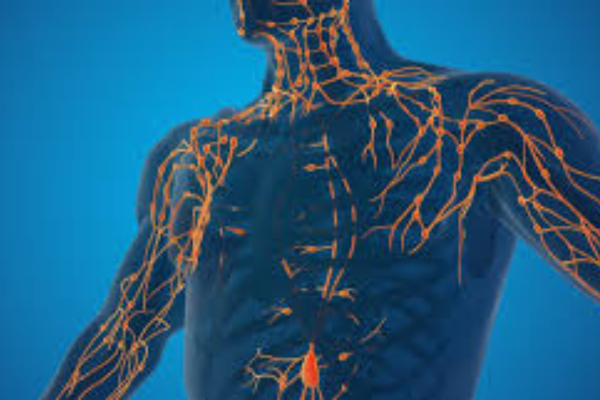
Mar 05 , 2024
Taking Care of Your Lymphatic System
The Lymphatic System is a part of the circulatory system and a crucial part of the immune system. It consists of glands, lymph nodes, the spleen, the thymus gland, and the tonsils. The lymphatic system has multiple functions such as:
Removing interstitial fluid from tissue
Absorbing and transporting fatty acids and fats from the digestive system
Transporting white blood cells to and from the lymph nodes into the bones
Transporting antigen-presenting cells (APCs), such as dendritic cells, to the lymph nodes where an immune response is stimulated
Unfortunately, the lymphatic system is out of balance in many people due to nutrient deficiencies, high intake of processed foods, and lack of physical activity. The following health conditions could suggest that your lymphatic system requires a serious cleansing: arthritis, skin conditions, digestive disorders, frequent headaches, sinus infections, excess weight, chronic fatigue or unexplained injuries.
The circulatory system and lymphatic system rely on one another. While blood circulates around the body via blood vessels, some fluid naturally leaks out and makes its way into tissue. This is a normal process that brings nutrients, water and proteins to cells. The fluid also gathers cells’ waste products, like bacteria or even dead or damaged cells like cancer cells.
Tissues located around the body can become inflamed and painful when circulation slows and inflammation builds. A healthy lymphatic system nourishes muscle, joint and other tissue because lymph vessels have tiny openings that let gases, water and nutrients pass through to surrounding cells (called interstitial fluid). The fluid then drains back into the lymph vessels, then goes to the lymph glands to be filtered and finally to a larger lymphatic vessel located at the base of the neck called the thoracic duct. The thoracic duct dumps cleaned lymph fluid back into the blood, and on and on the cycle goes — which is why circulation is important for keeping the system running smoothly, otherwise tissue can become swollen with excess waste.
How to maintain a strong Lymphatic System:
THE FOOD WE EAT The more nutrient-dense your diet, and the less chemicals entering your body, the better your lymphatic system can work. Foods that put stress on the digestive, circulatory and immune systems include common allergens (like dairy products, gluten, soy, shellfish or nightshades, for example), low-quality animal products, salt, sugar refined vegetable oils and processed foods that contain chemical toxins.
Anti-inflammatory foods, on the other hand, supply much-needed nutrients and antioxidants while also lowering free radical damage (also called oxidation stress) that ages the body and lowers immunity.
Some of the key high-antioxidant foods to focus on include: green leafy vegetables and cruciferous veggies (broccoli, cabbage, cauliflower, etc.), berries, omega-3 foods like salmon and wild seafood, nuts and seeds (chia, flax, hemp, pumpkin, etc.), unrefined oils like extra virgin olive oil and coconut oil, herbs and spices (like ginger, turmeric, garlic). Other nutrient rich and cleansing foods include avocados, garlic, brazil nuts, almonds, walnuts, cranberries and other low sugar fruits. Drink clean water and herbal teas that promote Lymph health, such as Nettle, Dandelion, Echinacea, Cilantro and Parsley.
EXERCISE The lymphatic system doesn’t have its own active pumping system and it needs the body’s movement, breathing, intestinal activity, and muscle action to create flow and push the toxins out of the body. The lymphatic system works best when you move your body, which helps keep fluids circulating and nutrients reaching your cells. There’s a reason why being stagnant causes you to feel more achy, stiff and prone to becoming sick.
The most stimulating exercise for the lymphatic system is rebounding on a small trampoline. Just 5 to 10 minutes of jumping daily can really get your heart rate up and help keep your lymphatic system running smoothly.
Regular exercise is key, such as simply walking but some exercise seem to be particularly beneficial, including yoga (which twists the body and helps fluid drain), high-intensity interval training (also called HIIT workouts, which is great for improving circulation) or rebounding as mentioned above.
BREATHE DEEPLY Our bodies have 3 times more lymph fluid than blood, but there is no organ to pump it. The pumping action of deep breathing will help the lymphatic system transport the toxins into the blood before they are detoxified by the liver.
DRY BRUSHING and HOT & COLD SHOWERS Brush your dry skin in a circular motion for 10 minutes by using a natural bristle brush, and then take a shower. You can combine dry brushing with hot and cold showers for better effects. The hot water helps dilate the blood vessels, while the cold water shrivels them. This creates a “pump” action that forces out the toxic fluids that have remained in the body. This therapy is not recommended for pregnant women or for those who suffer from cardiovascular disease.
AVOID WEARING TIGHT CLOTHES By wearing excessively tight clothing, you are reducing circulation in the lymphatic system. Tight clothing can cause blockages in the lymphatic system, which can lead to an accumulation of toxins.
ALTERNATIVE TREATMENTS Lymphatic drainage massage is a type of specialised massage therapy that helps cells release toxins and breaks up lymph congestion. Infrared Sauna Treatment, Acupuncture and Flo Presso therapy are other effective treatments that will help you stimulate lymph flow and help remove toxins from the body.
Ref: https://draxe.com/health/lymphatic-system/
https://synergyhealthassociates.com/cleanse-clogged-lymphatic-system/
